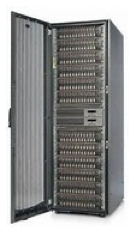 Many companies are upgrading their storage systems, consolidating data centers, or moving some of their data storage to the cloud. As always, it’s best if you can plan ahead for the disposition of the storage arrays and hard drives.
Many companies are upgrading their storage systems, consolidating data centers, or moving some of their data storage to the cloud. As always, it’s best if you can plan ahead for the disposition of the storage arrays and hard drives.
Your first priority is most likely is data security, and making sure all of the data is destroyed. The next thing is trying to recover some value from what was once a very expensive system. The third important aspect is to ensure that if all or some of the system is not remarketed, that it is recycled in compliance with all regulations.
If the system as a whole, or the hard drives, has remarket value and your corporate data security policy allows, you will need to have all of the drives erased.
Higher-capacity drives (over 300GB) take quite a bit of time to be erased/wiped properly. This can be completed onsite at your facility by the OEM or a certified ITAD and data destruction vendor. It can also be done after secure transport to a certified vendor’s facility. The latter is less expensive and disruptive for you. The decision is usually based on corporate policy.
Whoever does the erasure for you should provide a list of all the hard drives in the system, by serial number, and certify that they have been successfully wiped, or if not, pulled out and destroyed.
If the goal is to remarket the entire system, it’s also important to ensure the erasure process does not erase the hard drive firmware, which would render the system useless.
Don’t remove the drives from the arrays! Keeping the drives in their native system physically protects the drive during transit but also gives the asset the best chance for resale. If you take the drive out of the machine, you may turn an asset from a revenue event to a cost event. If you have having the drives destroyed offsite, shipping them installed in a large system is much more secure than loose in containers.
Work collaboratively with your ITAD/NAID vendor by sharing array and HD configuration details to determine if erasure is the best option to insure max resale value or physical destruction if the arrays do not have value in the secondary markets. The capacity, speed and interface of the drives all impact potential remarket value.
If there is a large volume of HDs (5K or more) that are determined to be below resale value thresholds, and you require onsite destruction, you may want to consider degaussing instead of physical destruction to save time and money and keep the process cleaner.
If your drives are SSDs, they most likely have resale value. SSDs can be securely erased and certified for remarketing.
A visit with a NAID AAA certified ITAD vendor while you are planning the end of life of the storage systems will help you determine the best plan for you.
You may also want to consider having your ITAD vendor provide de-racking or an audit of the systems prior to removal from your facility. Your ITAD vendor can also help ensure that the system is packed to prevent damage during transport.
Contact Us to speak to an ITAD Professional about your storage system disposition and secure data destruction options.

